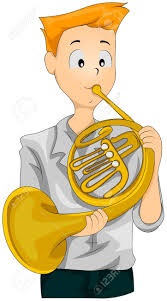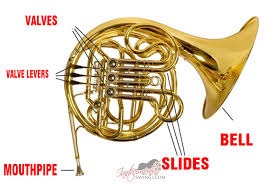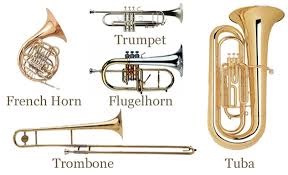
From the monarchs to the shepherds, from messengers to hunters and from the hills to the battlefields, the Horn has always been a harbinger of victory and triumphs. The purpose of including brass instruments in any musical ensemble was to create a loud sound. From the loud harsh sound of merrymaking to the mellow tones of romantic yearnings, the Horn has been a symbol for the expression of various emotions. A majestic instrument of music, it is a voice that possesses a certain degree of melody, harmony and rhythm. . A member of the brass wind family of musical instruments, the Horn has the ability to hold its voice amongst the various instruments in an ensemble. Let us learn more about this instrument.
The earliest Horn was made from ivory, which was obtained from the elephant’s tusks and had decorations. The use of Horns as signalling instruments dates back to the period between 10th–12th centuries. Evidence shows that Horns have an Asian origin and had reached Europe through Byzantium. There are mentions of Horn in the French literature around the 12th century. From the period between 16th-19th centuries, there were many variations of the Horn in use, such as the Alpine Horn and the Oliphant. The ancient Horns were very long, around 10 –11 feet in height and were mostly made from wood. The first instrument with a bell–like shape was made in Europe around the 18th century.

A Horn works on the principle of blowing into the mouthpiece. The player blows the air from the mouthpiece, which travels through the tubing of the instrument. The tubing may be cylindrical or conical in shape. Sound of the Horn is produced when the player buzzes his lips against the mouthpiece and pumps air into the tubing. Different types of Horn have unique mechanism of their own but the basic principle of buzzing of mouthpiece is common to the working of all Horns. Some types of Horns have valves and tuning slides that enable to change the octave and pitch of the sound which is produced from the Horn. The valves control the flow of the air, which passes through the tubing. The conical or cylindrical tubing also plays a major role in the working of a Horn.

Some of the important parts of a normal Horn include the mouthpiece, the valve levers, valves, tuning slides and the bell.

In the earlier centuries, a Horn was used mostly as a signalling instrument. However, later the 18th and 19th centuries saw the Horn becoming an essential part of the music ensembles such as the orchestra, chamber music and solo rendition and also as an accompaniment along with the violin and piano in the trio called as Horn trio.

Types of Horns include the French Horn, Viennese Horn, German Horn, Russian Horn, Wagner Tuba, Natural Horn, flugelhorn, Finger–hole Horn and the Mellophone.

The Legendary composers such as Beethoven, Mozart, Brahms, Sebastian Bach and Joseph Haydn have included Horn in their solo and chamber music works. The 20th century composers of Horn include Yehuda Yannay, Mark Schultz and Wolfgang Plagge who played it unaccompanied. Today, leading Horn players are Paul Basler, Usamah Mustafa and Stephen Lines.
A Horn or the French Horn is a difficult instrument to play and requires practice. Beginners may take a few weeks, months, a year or even more. It is a brass wind instrument and is played in the same manner. Correct embouchure (position of the mouth) and buzzing of the mouthpiece helps in mastering the technique of playing the Horn. Miami Fine Arts Academy and Yale School of Music are well known for teaching the brass musical instrument including the Horn.


